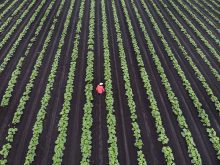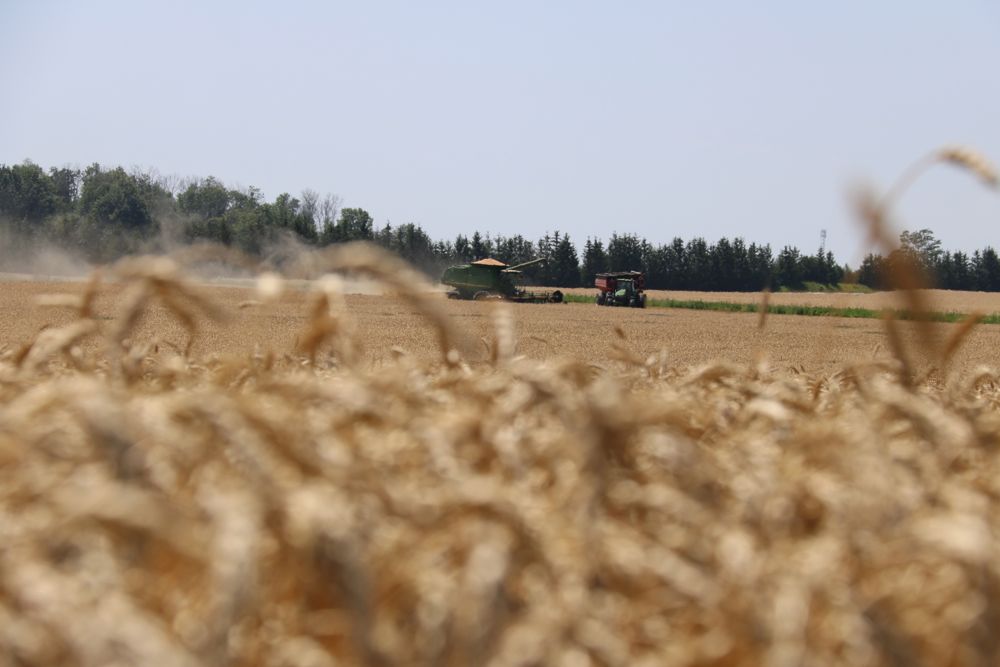It’s a lament heard all across the North American corn and soybean belt. Soybean yields are lagging behind corn. Increasingly, the two crops don’t even seem like they’re competing in the same league. Corn powers its way to great yields year after year. Soybeans surprise us with strong yields — sometimes.
More farmers faced with the need for a consistent, dependable crop are choosing corn. As producers, many of us feel corn yields are consistently better over time and soybeans continually give problems.
The truth of course probably lies in the middle of that statement, but make no mistake. On most eastern Canadian farms, corn is king. Despite all the bold predictions over the past 20 years, and despite all the progress we’ve made with field management, for most of us it definitely isn’t soybeans.
Read Also

Could crop sharing be a viable option for your farm?
Crop sharing could be a good option for young and beginning farmers.
The question is, is the problem because of the soybean genetics, or is it because we farmers still haven’t found the right management package to unlock those genetics?
At first glance it may be difficult to place the blame, or even to know how much blame to assess. As farmers, we ask ourselves, have we been made callous by new technologies in other crops that deliver big instant gains, especially in corn, so we don’t notice the steady progress of our year-over-year yield trend in soybeans? Or is there a problem because soybean biotechnology hasn’t caught up to corn traits?
Or are soybean yields doomed to play second fiddle to the corn juggernaut?
Based on provincial yield testing, soybean yields are increasing at 0.32 bushels per acre per year, Horst Bohner tells me. Bohner is the provincial soybean specialist for the Ontario Ministry of Agriculture Food and Rural Affairs, based in Stratford and he says that, for comparison’s sake, corn yields in Ontario are increasing by 2.0 bushels per acre per year.
So it’s true. Corn yields are outpacing soybeans, and if the trend continues, the gap will only get larger.
Some might argue that this is unsustainable over time. It certainly creates great challenges for Ontario soybean producers, who have been growing soybeans for a considerable amount of time.
With the agricultural economy providing huge cost hurdles to jump over every year, maximizing our financial returns is extremely important. So at the same time that corn yields are outpacing soybeans, it is also becoming more important than ever that as farmers, we get the choice right.
In other words, it isn’t just genetics. Economics too are conspiring to make the problem of lower soybean yields even more acute.
Tight rotations
Bohner says that one of the biggest reasons for the lower rate of growth in soybean yields in Ontario has to do with tight rotations. For instance, in some areas of Ontario it is a fairly standard practice to grow soybeans after soybeans, or in a two-year rotation with wheat or three-year rotation with wheat and corn.
In these scenarios, soybeans are more susceptible to diseases, which keeps a check on soybean yield increases. Bohner says a longer rotation is optimal to enhance soybean yields.
Of course in some parts of the East, it’s quite a management challenge to widen out the crop rotation intervals. Bohner agrees, but still repeats that the squeeze on rotations is a major detriment to Ontario soybean yields.
Bohner also has some specific comments about the characteristics of the corn plant versus the soybean plant. Corn is a “producer,” he says, and soybeans are better categorized as a “survivor.”
In other words, corn produces starch, and can do that with less trouble versus the soybean plant, which produces protein.
As well, soybeans are more of a survivor type of crop because they start with a great amount of potential and “suffer” many yield-robbing factors along the way to harvest. For instance, soybeans produce a lot of energy during the day, but lose significant amounts overnight. Or here’s another example. Soybeans produce a lot of pods, but abort many of them along the way. As well, soybeans fix their own nitrogen, but it takes energy to do this.
At the end of the day, the soybean is a plant that has to survive the challenges that confront it in order to go on and produce yield. Corn seems more like the opposite. It’s off to the races unless something holds it back.
Of course soybean technology is changing. In Ontario, Roundup Ready II soybeans are consistently outyielding Roundup Ready 1 soybeans in provincial trials by two bushels per acre.
That’s a nice gain, but producers still want to know when we will be able to expect 90-bushel-per-acre soybeans on a consistent basis. At .32 bushels per acre per year increase in yield it may take over 100 years to get there.
Bohner cautions that it’s hard to forecast long-term yields. One never knows what new technology may come along in the future to help mitigate soybean yield challenges. It may be just around the corner.
Endless pests
There surely are myriad problems that soybeans face on their road to harvest time. Pests such as the soybean aphid and the bean leaf beetle along with assorted stinkbugs are just some of them. Corn on the other hand has fewer pests, with two of the main ones, European corn borer and rootworm effectively controlled by trait stacked corn hybrids.
In part, David Hooker tells me, that’s simply because the corn genome is much easier to work with.
Hooker is working on a soybean yield enhancement project called the Smart initiative at the University of Guelph’s Ridgetown campus. Smart stands for Strategic Management Adding Revenue Today. It is a systems approach looking at multiple factors that affect soybean yields and is focused on helping producers deal with the various factors that limit soybean yields.
In the first few years of research with the program, Hooker and other growth researchers have seen a boost of four to 10 bushels per acre on various soybean varieties. This has involved, in some instances, juggling some of the multiple factors such as increasing plant population, using fungicides and increasing nitrogen application. The research is ongoing and will surely produce results that we will want to watch in the years to come.
There is a specific need to focus in on the reproductive phase of the soybean plant because this is a phase specifically correlated to soybean yield, Hooker says. To explain, he points to the growing season in 2011 where much of southern Ontario received beneficial rainfall during the critical August period of reproductive soybean growth. This translated into very high yields for many Ontario soybean producers this year.
Good conditions with adequate rainfall during the reproductive soybean growth phase result in more seeds per plant, which ultimately adds up to greater yields. Those individual seeds can be heavier too, which has an impact on the yield per acre.
Research funding may also be an issue with regard to the difference in soybean and corn yield increases. Hooker says that because the corn genome is so much easier to work with and manipulate, investors can see a more direct route to a profitable return in corn than soybeans. So, by default investment capital flows more freely into corn versus soybeans, and the corn economy builds this into a feedback loop that drives more and more benefits. In other words, if you start out being better at working on corn than soybeans, this gap just grows when you continue to do more corn work.
Back to rotations
Yet Bohner and Hooker agree that part of the solution may be up to farmers. It’s that issue of rotations again.
Hooker also says good soil quality is a foundation for good soybean yields. Compared to corn, soybeans have a root system that is much more sensitive to fungal organisms and pathogens. That is one reason why continuous soybeans produce lower yields.
Hooker says the solution might be to look at a longer rotation with corn, wheat and soybeans. This may mean growing corn two years in a row, although there is a 10 per cent yield decrease associated with second-year corn, so it is a huge management problem that needs to be continually revisited.
Still, Hooker says the 150-bushel-per-acre soybean yields garnered by Kip Cullers in U.S. soybean fields give a good idea of the soybean’s true yield potential.
How about getting those amazing soybean yields in Ontario? Or would we at least be satisfied with soybean yield improvement catching up to the rate of change in corn yields?
The challenge of course is to not give up. Soybean yields are increasing. There is a way forward and maybe someday 100-bushel-per-acre Ontario soybeans will be the norm. CG














